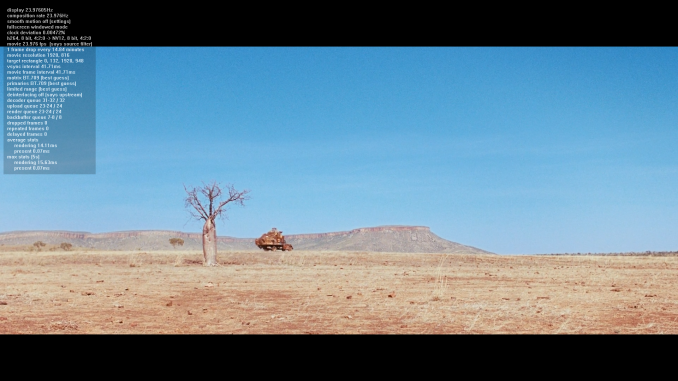Intel's Haswell - An HTPC Perspective: Media Playback, 4K and QuickSync Evaluated
by Ganesh T S on June 2, 2013 8:15 PM ESTRefresh Rate Handling - 23.976 Hz Works!
Readers following our HTPC reviews know by now that Intel's 23 Hz issue was left unresolved in Ivy Bridge. It is definitely better than the Clarkdale days, as users no longer get 24 Hz when setting the display refresh rate to 23 Hz (23.976 Hz intended). However, the accuracy is not enough to prevent a frame drop every 4 minutes or so (the 23 Hz setting results in a display refresh rate of 23.972 Hz in Ivy Bridge). One of the first things I checked after building the Haswell HTPC was the 23 Hz setting. The good news is that the display refresh rate accuracy is excellent.
Even better news is that the set of display refresh rates obtained with the Haswell system is more accurate than anything I had obtained before with AMD or NVIDIA cards. The gallery below presents some of the other refresh rates that we tested out. madVR reports frame drops / repeats only once every 6 hours or more in the quiescent state.
Unfortunately, Intel still doesn't provide a way to easily configure custom resolutions (in fact, the latest driver release seems to have removed that option completely. Update: A reader pointed out that the feature is still available as CustomModeApp.exe in the drivers folder, but long time users still miss access to it from the main control panel). I know for a fact that my Sony display (KDL46EX720) does support 25 Hz and 50 Hz refresh rates, but Intel doesn't allow those to be configured. We are willing to cut Intel some slack this time around because they have finally resolved a bug that was reported way back in 2008.
















95 Comments
View All Comments
mindbomb - Sunday, June 2, 2013 - link
The current version of madvr does support dxva native actually.gevorg - Sunday, June 2, 2013 - link
The near $300 price of i7-4765T is extremely price prohibitive for HTPC use. Majority of users will find AMD's Trinity APUs to be perfect for HTPC job.Also, unless Intel handicapped it, you should be able to downclock any i7 Haswell CPU to be near i7-4765T speed/TDP. This is possible with Sandy Bridge and Ivy Bridge chips.
meacupla - Sunday, June 2, 2013 - link
the only problem with trinity is the rather limited choice of mITX mobos and rather high power consumption and thermal output, which makes them not ideal for compact HTPCs...Although, granted, for $300 for the CPU alone, I'd much rather buy an xboxone or PS4.
HisDivineOrder - Tuesday, June 4, 2013 - link
You just listed four problems while saying, "the only problem with trinity." That's the real problem with AMD's options. There's like "one problem" for everyone.Spunjji - Tuesday, June 4, 2013 - link
Except for those of us for whom there are none, and/or are prepared to live with limitations to not have to shell out $300 on a CPU.vnangia - Sunday, June 2, 2013 - link
Very true. The SNB low-TDP parts were within spitting distance of their equivalent regular-TDP parts (about $25-50 more), not $200 more.JDG1980 - Sunday, June 2, 2013 - link
If you can wait six months or so, you're probably going to be better off going with Kaveri. AMD is going to be substantially increasing the GPU power of their APU and switching to a homogenous memory architecture so everything uses GDDR5. What little I've heard (which may not be reliable) seems to indicate that the GPU in Kaveri may be about on par with the discrete 7750. I don't know if they can pull that off, but if they even come close then they will have basically rendered all sub-$100 discrete GPUs obsolete.lmcd - Sunday, June 2, 2013 - link
Inaccurate. $100 GPUs will have improved by Kaveri's release. And AMD's drivers won't necessarily meet the expectations set here either.medi02 - Monday, June 3, 2013 - link
This driver FUD is getting old...Spunjji - Tuesday, June 4, 2013 - link
Very old, but don't expect it to stop.